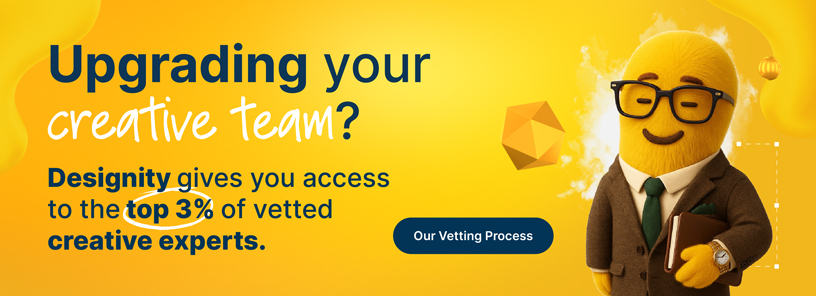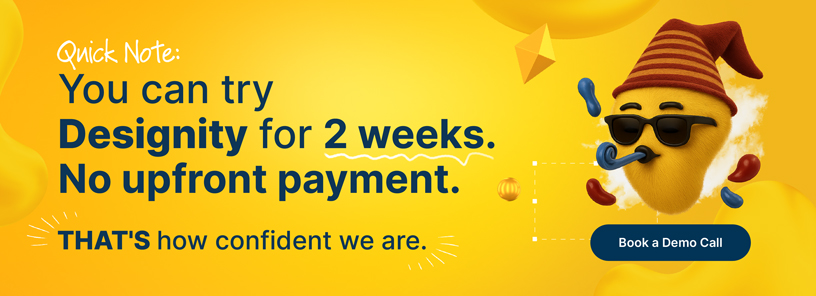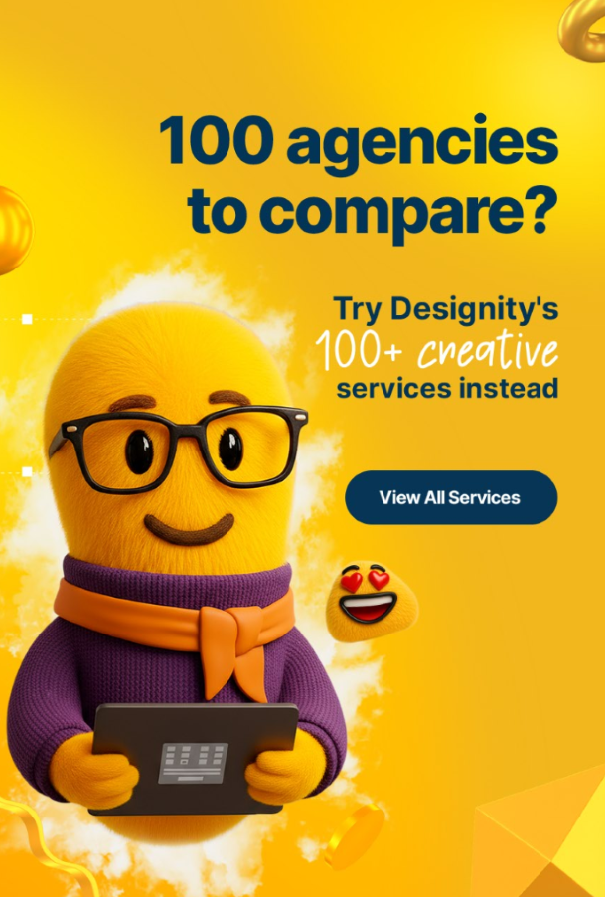The final month of 2023 is fast approaching and now is the perfect time to set our sights on the future.
If you’re a small business looking to expand in 2024, then you’re going to need to stay ahead of the curve.
How do you do that?
By implementing a solid growth marketing strategy!
So, whether you’re a startup looking to make your mark in the new year or an established company looking to broaden your borders, today’s blog is bringing you 24 winning strategies to grow your business, expand your customer base, and drive more sales!
What is Growth Marketing?
Growth marketing or growth hacking (growth hacking!!) is a data-driven and highly focused approach to marketing. The key word here is growth, friends.
A successful growth marketing strategy aims at achieving rapid and scalable business growth and customer acquisition for your brand.
Unlike other traditional marketing that covers a wide range of activities, a growth marketing campaign has its sights set on specifically acquiring and retaining customers to expand your business and bring in more revenue.
24 Growth Strategies to Expand Your Brand in 2024

If you’re checking out this blog, you’re probably already focused on the wonderful things the future will bring!
So, if you’re looking to expand in 2024, then here are 24 of our best growth marketing strategies to make next year your biggest and most successful year yet!
1. AI-Powered Personalization
AI-powered personalization is an advanced strategy that employs artificial intelligence to create highly individualized experiences for your audience.
Here's how you can implement it effectively across your digital channels:
- Data Collection and Analysis — Begin by collecting data on user behaviors, preferences, and interactions. This data serves as the foundation for personalization.
- User Segmentation — Divide your audience into segments based on common characteristics, behaviors, or preferences. This segmentation enables you to target specific groups with personalized content.
- Content Customization — Tailor your content, product recommendations, and services to match the specific needs and interests of each user segment. AI algorithms continuously learn and adapt to ensure the relevance of the recommendations.
- Multi-Channel Implementation — Implement AI-powered personalization across various marketing channels, such as your website, email campaigns, and social media. Consistency across channels is essential for a seamless user experience.
Benefits of AI-Powered Personalization
- Enhanced User Experience — Personalization enhances the user experience by delivering content and product recommendations that resonate with individual users, which leads to increased engagement and reduced bounce rates.
- Improved Conversions — Highly relevant and personalized experiences are more likely to result in higher conversion rates. Users are more inclined to take the desired action, whether it's making a purchase or subscribing to a service.
- Increased Customer Loyalty — Personalization builds up a sense of connection and loyalty. Users feel valued and understood, making them more likely to return to your brand for future purchases.
- Data-Driven Insights — AI-powered personalization provides valuable insights into user behavior and preferences. These insights inform your marketing strategies, enabling you to continually refine your content, product offerings, and communication for better results.
2. Voice Search Optimization
Voice search optimization is all about adapting your digital presence to accommodate the rising trend of voice-activated devices like Amazon Echo and virtual assistants like Siri and Google Assistant.
To optimize your offers to be voice search-friendly, follow these steps:
- Conversational Content — Voice search users tend to use conversational and natural language. Create content that answers questions and provides solutions in a conversational tone.
- Structured Data Markup — Implement structured data markup on your website to help search engines understand and organize your content better, making it more voice search-friendly.
- Local SEO Focus — Since voice searches often include location-based queries, ensure your content is optimized for local search to attract users seeking nearby businesses or services.
- Mobile-Friendly Design — Voice search is frequently used on mobile devices. Ensure your website is mobile-friendly, providing an excellent user experience for those using voice search on smartphones.
Benefits of Voice Search Optimization
- Improved Visibility — Optimizing for voice search increases your chances of appearing in voice search results, boosting your brand's visibility among users who rely on voice-activated devices.
- Local SEO Opportunities — Voice search often includes location-based queries. Optimizing for voice search can attract users searching for businesses or services in their vicinity.
- Enhanced User Experience — Voice search content tends to be more conversational and user-friendly, improving the overall user experience, especially for mobile users who prefer voice queries.
- Staying Ahead of Trends — Embracing voice search allows you to remain at the forefront of technological trends, aligning your marketing strategies with the preferences of an increasingly tech-savvy audience.
3. Video Content Dominance
In 2024, we’re willing to bet that video marketing will continue to be a dominant and highly effective strategy for engaging your target audience and bringing them into your marketing funnel.
Here are some examples of video content your brand can start producing for use on your website, your socials, ads, or in an email campaign:
- Live Streaming — Live streaming allows you to connect with your audience in real-time. It's perfect for Q&A sessions, product launches, and behind-the-scenes glimpses. Platforms like Facebook Live, Instagram Live, and YouTube Live enable you to interact directly with viewers, fostering a sense of community and authenticity.
- Short-Form Videos — Platforms like TikTok and Instagram Reels thrive on short-form video content. These quick, attention-grabbing videos are an excellent way to communicate your brand's personality, share bite-sized tips, and engage with a younger, mobile-savvy audience.
- Interactive Content — Interactive video content, such as quizzes, polls, and 360-degree experiences, creates a dynamic and engaging user experience. It invites active participation and increases user retention.
Benefits of Video Content
- Enhanced Engagement — Video content is highly engaging and captures users' attention more effectively than text or static images. Viewers are more likely to stay engaged and absorb your message through videos.
- Improved SEO — Search engines favor websites and platforms with video content. Incorporating videos into your strategy can enhance your search engine rankings and visibility.
- Better Conversions — Video content can directly impact conversions. Whether it's a product demonstration, customer testimonial, or educational content, videos influence purchase decisions and lead to higher conversion rates.
- Human Connection — Video content allows your brand to show its human side. It fosters a personal connection with your audience, making your brand more relatable and authentic.
4. Helpful Chatbots and AI Assistants
Chatbots and AI-powered assistants are essential tools for providing real-time support to your customers. These automated systems can answer questions, guide customers through their journey, and provide assistance 24/7.
You can integrate chatbots into your website, social media, and messaging platforms to offer:
- Real-Time Support — Chatbots can instantly address customer inquiries, ensuring that users receive quick responses and solutions to their problems, day or night.
- FAQs and Information Retrieval — Chatbots can retrieve information from your knowledge base, providing users with instant access to product details, pricing, and support resources.
- Customized Recommendations — AI-powered assistants can offer personalized product or content recommendations based on users' preferences and behavior.
Benefits of Chatbots and AI Assistants
- 24/7 Availability — Chatbots and AI assistants provide round-the-clock support, enhancing customer satisfaction and making sure that no question goes unanswered.
- Time and Cost Efficiency — They reduce the need for human customer support agents to handle routine inquiries, saving both time and resources.
- Consistency — Chatbots provide consistent answers to frequently asked questions, ensuring that all customers receive accurate information.
- Data Collection — AI-powered assistants collect valuable data on user interactions, which can be used to improve your products, services, and marketing strategies.
- Scalability — As your business grows, chatbots can easily handle increased customer service demands without the need for significant expansion of your support team.
5. User-Generated Content Campaigns
User-generated content campaigns are an effective way to engage your customers and build trust. Encourage your audience to create and share content related to your brand and then use this content in your marketing efforts.
Here are some examples of user-generated content you can use to add a touch of authenticity to your online presence:
- Customer Reviews and Testimonials — Encourage customers to write reviews and testimonials about their experiences with your products or services. Share these on your website and social media to build trust.
- User-Created Videos and Photos — Encourage customers to create videos or photos featuring your products or services. This can provide authentic and relatable content for your marketing.
- Contests and Challenges — Host user-generated content contests or challenges where customers can submit their content. This can create a sense of community and enthusiasm around your brand.
- Incorporate User Content into Marketing Materials — Use user-generated content in your email campaigns, on your website, and in advertising materials to showcase real customer experiences.
Benefits of User-Generated Content Campaigns:
- Trust and Authenticity — User-generated content provides authentic endorsements of your brand, fostering trust among potential customers.
- Engagement and Community — Encouraging user-generated content builds a sense of community around your brand and engages your customers in a meaningful way.
- Cost-Effective Content — Leveraging user-generated content reduces the need for creating content from scratch, making it a cost-effective strategy.
- Diverse Perspectives — User-generated content showcases various perspectives, use cases, and applications of your products or services, appealing to a wider audience.
6. Influencer Partnerships
Collaborating with industry influencers and thought leaders can significantly expand your brand's reach and credibility. These influencers have established authority and a loyal following, making them valuable partners for your marketing efforts to reach new eyes.
Here’s how you do it:
- Identify Relevant Influencers — Find influencers whose expertise aligns with your industry or niche. Look for individuals who share your brand values and can effectively convey your message.
- Establish Partnerships — Reach out to influencers and propose collaboration ideas. These can include sponsored content, co-hosted events, or influencer takeovers of your social media accounts.
- Authentic Storytelling — Influencers can authentically share their experiences with your products or services, connecting with their audience on a personal level.
- Measure and Analyze Results — Use tracking tools to measure the impact of influencer partnerships on your brand awareness, engagement, and conversions.
Benefits of Influencer Partnerships
- Extended Reach — Partnering with influencers allows you to tap into their existing, engaged audience, reaching potential customers you might not access otherwise.
- Credibility and Trust — Influencers lend their credibility to your brand, making their followers more likely to trust and engage with your products or services.
- Targeted Marketing — By collaborating with influencers in your niche, you can ensure that your message reaches a highly targeted audience and hits their pain points.
- Effective Content Creation — Influencers are skilled content creators who can generate high-quality, visually appealing content that highlights your brand.
- Enhanced Engagement — Influencer partnerships often result in higher engagement rates and social proof, as their followers actively interact with their content.
7. Sustainability Initiatives
Sustainability initiatives are a powerful way to align your brand with eco-conscious values and connect with a growing audience of environmentally aware consumers. By showcasing your commitment to sustainability and corporate social responsibility in your marketing efforts, you can create a positive impact on both your brand's reputation and the environment.
Here are some strategies to incorporate sustainability into your marketing:
- Green Product Promotion — Highlight eco-friendly products and practices, emphasizing their positive environmental impact.
- Cause-Related Marketing — Partner with environmental organizations or initiatives and donate a portion of your profits to a green cause.
- Educational Content — Create content that educates your audience about sustainable living, environmental issues, and how your products or services contribute to a greener world.
- Transparency — Be transparent about your sustainability efforts, sharing your environmental goals and achievements with your audience.
Benefits of Sustainability Initiatives
- Enhanced Brand Reputation — Demonstrating a commitment to sustainability can significantly boost your brand's reputation. Consumers are more likely to trust and support companies that actively work towards reducing their environmental impact.
- Attracting Eco-Conscious Consumers — Sustainability initiatives resonate with the ever-growing community of eco-conscious consumers. By aligning your brand with their values, you can attract and retain customers who prioritize sustainable choices.
- Positive Social Impact — Beyond business success, sustainability initiatives contribute to a more sustainable and environmentally responsible world. Your marketing efforts can help raise awareness of critical environmental issues and encourage positive change.
- Competitive Advantage — In a competitive marketplace, sustainability can set you apart. It can be a key differentiator that influences consumers' purchasing decisions in your favor.
- Cost Savings — Many sustainability initiatives, such as reducing energy consumption or minimizing waste, can lead to cost savings for your business, making it a financially prudent choice.
- Employee Engagement — Demonstrating your company's commitment to sustainability can also boost employee morale and engagement. It's often a source of pride for your team to work for a company that values environmental responsibility.
8. Interactive Content

Interactive content is a powerful and engaging strategy that we predict will continue to captivate audiences in 2024. By encouraging active participation and creating a fun and dynamic user experience, you can leave a lasting impact on your target audience.
Here are some great examples of interactive content:
- Quizzes — Create fun and informative quizzes related to your products, services, or industry. Quizzes can be designed to educate, entertain, or offer personalized recommendations.
- Polls and Surveys — Gather valuable insights by conducting polls and surveys. You can ask questions about customer preferences, opinions, or future content topics to better tailor your marketing efforts.
- 360-Degree Experiences — Provide immersive 360-degree experiences that allow users to explore your products, services, or virtual spaces. These experiences are particularly effective for showcasing locations, properties, or unique offerings.
Benefits of Interactive Content
- Enhanced Engagement — Interactive content invites users to actively participate, keeping them engaged for longer durations. It's an effective way to capture and maintain their attention.
- Data Collection — Quizzes, polls, and surveys enable you to collect valuable data about user preferences and behaviors. This information can be used to refine your marketing strategies.
- Personalization — Interactive content can provide personalized recommendations or results based on user input, making the experience more relevant and tailored to individual interests.
- Increased User Retention — Users are more likely to remember and return to your content when they actively engage with it. This boosts user retention and reinforces your brand in their minds.
9. Live Experiences and Virtual Events
If you’re looking to connect with your audience, spicing things up with a mix of live experiences and virtual events is a great way to do it.
Creating meaningful experiences for your audience is a great way to amp up engagement, get people talking, and build up a sense of community around your brand!
Here are some other benefits of incorporating live experiences and virtual events into your marketing efforts:
- Interactive Engagement — Hosting live webinars, Q&A sessions, and virtual product launches allows real-time interaction, fostering a sense of community and engagement.
- Global Reach — Virtual events break geographical barriers, enabling you to reach a broader audience and connect with potential customers worldwide.
- Memorable Experiences — Creating immersive online experiences helps your brand stand out, leaving a lasting impression on attendees and generating positive word-of-mouth.
- Cost-Effective — Virtual events can be more cost-effective than traditional in-person events, allowing you to allocate resources efficiently.
- Analytics and Insights — Track attendee engagement, participation rates, and feedback to gain valuable insights for future marketing strategies.
Platforms for Live Experiences and Virtual Events
- Zoom — Widely used for webinars and virtual meetings, Zoom offers features for hosting interactive events with large audiences.
- Hopin — A comprehensive virtual events platform, Hopin provides tools for creating engaging and customizable online experiences.
- Remo — Known for its interactive virtual space, Remo facilitates networking and collaboration during virtual events.
- Eventbrite — While traditionally known for ticketing, Eventbrite also supports virtual event hosting, ticketing, and promotion.
- Run The World — This platform focuses on creating engaging virtual experiences with interactive elements like virtual tables and stages.
- Bizzabo — Bizzabo offers a holistic approach to event planning, including tools for virtual and hybrid events.
- Airmeet — Designed for networking, Airmeet enables interaction through virtual tables, speed networking, and Q&A sessions.
- INXPO — With a focus on engagement, INXPO provides tools for hosting virtual events, webinars, and live streaming.
- Whova — Whova offers features for both in-person and virtual events, including event promotion, networking, and agenda management.
- On24 — On24 specializes in webcasting and virtual events, providing a platform for engaging and interactive online experiences.
10. Email Marketing Automation
Email marketing automation remains a key strategy for efficient communication and engagement with your audience in 2024. By harnessing the power of automation, you can deliver targeted, timely, and personalized messages to your subscribers.
Here are benefits of Email Marketing Automation:
- Enhanced Personalization — Automation allows you to segment your email list and send tailored content to specific groups of subscribers. This level of personalization can significantly improve engagement and conversions.
- Time Efficiency — With automated email workflows, you can set up a series of emails to be sent at optimal times, ensuring that your subscribers receive content when they're most likely to engage.
- Behavior-Triggered Messages — Automation enables you to send emails triggered by specific user actions or behaviors. For example, you can send a welcome email, cart abandonment reminders, or re-engagement campaigns automatically.
- Consistent Communication — Automation ensures that you maintain consistent communication with your audience. Subscribers receive relevant and timely content, even when your team is not actively involved in the process.
- Data-Driven Insights — Email marketing automation tools often provide valuable data and analytics. You can track open rates, click-through rates, and conversion metrics to measure the effectiveness of your email campaigns.
Popular Email Marketing Automation Platforms
- Mailchimp — Mailchimp offers a user-friendly platform with a variety of features, including automation, analytics, and email templates.
- HubSpot — HubSpot's marketing automation tools provide comprehensive solutions for email marketing, lead nurturing, and customer relationship management (CRM).
- Constant Contact — This platform is known for its simplicity and offers customizable templates, email automation, and contact management.
- ActiveCampaign — ActiveCampaign combines email marketing with marketing automation and CRM, making it a robust choice for small and mid-sized businesses.
- GetResponse — GetResponse offers a range of features, including email marketing, landing pages, and marketing automation, to help businesses grow their audience.
- SendinBlue — SendinBlue provides marketing automation and transactional email services with a focus on simplicity and affordability.
- Pardot — A Salesforce product, Pardot is a B2B marketing automation platform that offers advanced email marketing capabilities.
- Marketo — Marketo, also a part of Adobe, is a comprehensive marketing automation tool known for lead nurturing, email marketing, and analytics.
- Drip — Drip is designed for e-commerce businesses and offers features like personalized email campaigns and automation workflows.
- Campaign Monitor — Campaign Monitor is an easy-to-use email marketing platform that includes automation, templates, and analytics.
11. Shoppable Social Media Posts
Shoppable social media posts are a transformative trend that leverages the power of your social presence to drive direct sales. As we look ahead to 2024, we predict that this strategy will remain highly effective, allowing users to conveniently purchase products without leaving their favorite social platforms.
Here's how to implement shoppable social media posts effectively:
- Create Visual Product Galleries — Showcase your products through visually appealing and scroll-stopping images. Highlight their key features and benefits in an aesthetically pleasing manner.
- Tag Products — Most social media platforms, like Instagram and Facebook, offer the option to tag products within your posts. Tagging allows users to tap on specific items and get more information or proceed to purchase.
- Include Product Descriptions — Provide concise yet informative descriptions for each tagged product. Include essential details like price, sizes, and available variations.
- Add Call-to-Action (CTA) Buttons — Use compelling CTA buttons like "Shop Now" or "Learn More" to guide users to the next steps, such as visiting your website or making a purchase.
- Use User-Generated Content — Encourage customers to share their own photos or videos featuring your products. Repost these on your brand's social media to build trust and authenticity.
- Leverage Influencer Partnerships — Collaborate with influencers who align with your brand to showcase your products in a relatable and engaging way.
Benefits of Shoppable Social Media Posts
- Seamless Shopping Experience — Shoppable posts streamline the buying process, reducing friction and enhancing the user experience.
- Increased Sales — With direct purchase options, you can drive immediate sales, converting social media engagement into revenue.
- Enhanced Engagement — Users are more likely to engage with posts that allow them to explore and purchase products directly from their social feeds.
- Better Product Discovery — Shoppable posts enable users to discover and learn more about your products within the familiar context of their preferred social platform.
- Data-Driven Insights — Most platforms provide insights into the performance of your shoppable posts, helping you understand which products resonate with your audience.
12. Web 3.0 and Metaverse Integration
Web 3.0 and Metaverse integration represent the future of digital experiences and will offer new possibilities for connecting with your audience. As we look forward to 2024, embracing these technologies can set your brand apart, position you as a forward-thinking and future-proof brand, and provide innovative ways to engage your customers.
Here's how to effectively integrate Web 3.0 and the Metaverse into your marketing strategy:
- Explore Virtual Spaces — Investigate platforms and virtual spaces within the metaverse where you can establish a brand presence. Platforms like Decentraland and The Sandbox offer opportunities for virtual real estate ownership.
- Design Immersive Experiences — Create immersive and interactive experiences that align with your brand. These could include virtual showrooms, events, or product launches, allowing users to engage with your offerings in a virtual setting.
- Invest in NFTs — Consider creating non-fungible tokens (NFTs) that represent unique digital assets tied to your brand. These could be art, collectibles, or digital products that hold intrinsic value.
- Participate in Metaverse Communities — Engage with metaverse communities and forums relevant to your industry or niche. This can help you build connections, gain insights, and understand the metaverse landscape better.
- Collaborate with Metaverse Creators — Partner with Metaverse creators and artists to produce unique digital experiences or NFTs. Collaborations can introduce your brand to new audiences within the metaverse.
Benefits of Web 3.0 and Metaverse Integration
- Innovative Brand Image — Embracing the metaverse and Web 3.0 technologies positions your brand as forward-thinking and innovative.
- Enhanced Engagement — Immersive experiences in the metaverse can captivate users, creating memorable interactions that leave a lasting impact.
- Monetization Opportunities — NFTs and virtual real estate ownership offer monetization avenues, potentially generating revenue for your brand.
- Access to Tech-Savvy Audiences — Metaverse users tend to be tech-savvy and early adopters, making it a valuable space to connect with such audiences.
- Community Building — Participating in metaverse communities fosters community building and the opportunity to engage with passionate fans.
13. Content Repurposing
Content repurposing is a strategic approach that allows you to maximize the value of your existing content by transforming it into a variety of different formats. In 2024, we predict that this practice will remain useful for reaching a broader audience and reinforcing your brand message.
Here's how to effectively implement content repurposing:
- Identify High-Performing Content — Begin by identifying your existing high-performing content. This can include blog posts, articles, videos, or infographics that have resonated with your audience.
- Choose New Formats — Determine the new formats you want to create. For instance, you can turn a blog post into a video, a podcast episode, an infographic, or a series of social media posts.
- Adapt to Different Platforms — Tailor the repurposed content to suit different platforms. For instance, a video designed for YouTube might need adjustments to perform well on Instagram or TikTok.
- Update and Optimize — As you transform the content, make sure it's updated to reflect any changes or developments in the topic. Optimize it for the chosen format and platforms.
- Promote Across Channels — Once your repurposed content is ready, promote it across various marketing channels, including social media, email, and your website.
Benefits of Content Repurposing
- Expanded Reach — Repurposing content into different formats and platforms allows you to reach a broader and diverse audience.
- Efficient Content Creation — Content repurposing streamlines the content creation process as you build upon existing material rather than starting from scratch.
- SEO Benefits — Repurposed content can improve your website's search engine optimization (SEO) by offering a range of content formats that cater to user preferences.
- Improved Audience Engagement — Different formats cater to different learning styles and preferences, increasing audience engagement.
- Enhanced Brand Authority — Consistently repurposing valuable content reinforces your brand's expertise and authority in your niche.
14. Subscription Models
Subscription models have gained prominence as a compelling strategy to build a loyal customer base and generate recurring revenue. In 2024, they continue to be a valuable approach for expanding your brand's success.
Here's how you can effectively implement subscription models:
- Product or Service Selection — Choose which of your products or services are suitable for a subscription model. These can be physical products, software, exclusive content, or regular services.
- Pricing and Plans — Design clear pricing tiers and subscription plans that cater to different customer needs and budgets. Offer flexibility while ensuring that each plan offers distinct benefits.
- Communication and Promotion — Clearly communicate the value of your subscription offerings to your audience. Use targeted marketing to promote the benefits of subscribing.
- User Experience — Ensure a seamless user experience from the moment a customer subscribes to the ongoing relationship. Make it easy for subscribers to manage their accounts and access their benefits.
- Continuous Value — Continuously provide value to your subscribers. This can include exclusive content, early access to new products, ongoing support, or regular deliveries.
Benefits of Subscription Models
- Recurring Revenue — Subscription models create a predictable stream of income, reducing the uncertainty associated with one-time purchases.
- Customer Loyalty — Subscribers tend to be more loyal and engaged with your brand, leading to long-term relationships.
- Enhanced Customer Data — Subscribers offer more opportunities for data collection, helping you understand their preferences and tailor your offerings.
- Cross-Selling and Upselling — Subscription models can be used to cross-sell and upsell related products or services, increasing the average revenue per user.
- Community Building — Subscribers often form a community around your brand, fostering a sense of belonging and shared interest.
15. Augmented Reality (AR) Marketing
Augmented Reality (AR) marketing is an exciting and immersive strategy that we think will continue to captivate audiences in 2024. By taking advantage of AR technology, you can provide unique and interactive brand experiences that leave a lasting impression on your audience.
Here's how you can effectively implement AR marketing:
- AR App Development — Consider creating a dedicated AR app or partnering with existing AR platforms to deliver your AR experiences.
- Virtual Try-Ons — If you sell physical products, allow customers to virtually try them on. This is especially effective for industries like fashion and cosmetics.
- Interactive Ads — Develop interactive ads that enable users to engage with your products or services. This could include virtual product demos or interactive storytelling.
- In-Store AR — If you have physical retail locations, use AR to enhance the in-store experience. This can involve providing additional information, creating games, or offering guided tours.
- AR Content — Create AR content that can be shared on social media, encouraging users to engage with your brand online.
Benefits of Augmented Reality (AR) Marketing
- Immersive Brand Experiences — AR marketing provides immersive experiences that capture users' attention and create memorable interactions with your brand.
- Visual Product Exploration — AR allows customers to explore your products or services visually, boosting their confidence in making a purchase.
- Engagement and Shareability — AR content tends to be highly shareable on social media, expanding your brand's reach through user-generated content.
- Data Collection — AR interactions can provide valuable data on user behavior, preferences, and interests, helping you refine your marketing strategies.
- Competitive Differentiation — Incorporating AR sets your brand apart as technologically advanced and innovative, making it more attractive to tech-savvy consumers.
16. Gamification

Gamification is a highly engaging and interactive marketing strategy that's expected to continue captivating audiences in 2024. By incorporating game-like elements into your marketing efforts, you can encourage participation and enthusiasm among your target audience.
Here's how you can effectively implement gamification in your marketing campaigns:
- Contests and Challenges — Create fun and rewarding contests or challenges that encourage user participation and competition.
- Rewards Programs — Develop loyalty programs with point systems, badges, or discounts for customers who engage with your brand regularly.
- Educational Games — If your industry allows it, design games that educate users about your products or services while entertaining them.
- Interactive Quizzes — Craft quizzes or trivia games related to your industry or niche to test users' knowledge and provide instant feedback.
- Virtual Events — Host virtual events that include gamified elements like scavenger hunts, quizzes, or polls to engage participants.
Benefits of Gamification
- Enhanced Engagement — Gamification techniques are highly effective at capturing and retaining users' attention, leading to higher engagement rates.
- User Retention — Users are more likely to return to your brand and remain loyal when they're entertained and rewarded through gamification.
- Data Collection — Gamified interactions provide valuable data on user preferences and behaviors, allowing you to refine your marketing strategies.
- Brand Affinity — Gamification creates a positive and enjoyable user experience, fostering a sense of connection and affinity with your brand.
- Community Building — Gamification elements encourage users to interact with one another, building a sense of community around your brand.
17. Podcast Marketing
Podcast marketing is a dynamic strategy that we think will continue to gain momentum in 2024. Harnessing the power of audio content and entertaining programming, you can engage with a dedicated and growing audience, build authority in your niche, and forge deeper connections with your target demographic.
Here's how you can effectively incorporate podcast marketing into your strategy:
- Start Your Podcast — Launch your own podcast series featuring discussions, interviews, and insights related to your industry or niche.
- Sponsorship and Advertising — Explore opportunities to sponsor or advertise on existing podcasts that align with your brand.
- Guest Appearances — Appear as a guest on popular podcasts within your field to expand your reach and credibility.
- Content Repurposing — Repurpose podcast content into blog articles, videos, or social media snippets to reach a broader audience.
- Promotion and Distribution — Promote your podcast on various platforms, including Apple Podcasts, Spotify, and Google Podcasts, to maximize your visibility.
Benefits of Podcast Marketing
- Audience Connection — Podcasts create an intimate connection with listeners, allowing you to convey your message directly to your target audience.
- Niche Authority — Hosting or participating in podcasts positions you as an authority in your niche, bolstering trust and credibility.
- Content Repurposing — Podcast content can be repurposed across various channels, extending its reach and impact.
- Engagement and Loyalty — Podcast listeners often become loyal subscribers, engaging with your brand regularly.
- Networking Opportunities — Guest appearances on other podcasts open doors to networking and collaboration within your industry.
18. Community Building
Building an online community is a valuable and effective strategy that organizations have been using for years and can continue to use in 2024. Communities allow you to create a dedicated space for individuals with shared interests to interact, share experiences, and access valuable information.
Here's how you can start and nurture your own online community:
- Platform Selection — Choose the right platform for your community, whether it's a dedicated website forum, a social media group, or an industry-specific platform.
- Moderation and Engagement — Appoint community moderators or administrators to help keep up a respectful and informative environment. Actively engage with members to answer questions and participate in discussions.
- Content Sharing — Encourage members to share their experiences, advice, and success stories. They can also share relevant articles, infographics, and resources to boost engagement.
- Educational Webinars — Organize webinars or live Q&A sessions with professionals in your industry to provide valuable insights and answer the audience's questions.
- Feedback and Improvement — Regularly collect feedback from the community to understand their needs and preferences and then use this input to improve the community experience.
Benefits of Community Building
- Supportive Environment — Communities offer a supportive space for individuals to connect, share, and receive emotional support.
- Access to Expertise — Users can access expert advice, insights, and educational content, improving their knowledge and confidence in your brand.
- Customer Empowerment — Community engagement empowers folks to take an active role in their interests or purchasing decisions.
- Loyalty and Trust — Organizations that facilitate communities build loyalty and trust among their audience.
- Valuable Feedback — The community can serve as a source of valuable feedback for your brand, helping you to further tailor your services and content.
19. Micro-Moments
Micro-moments are brief but critical points in a customer's journey where they seek immediate information, assistance, or solutions. Recognizing and addressing these micro-moments is a key strategy for businesses across various industries.
Here's how you can effectively tap into micro-moments:
- Understand User Intent — Identify the common micro-moments related to your industry or products. Understanding user intent in these moments helps you tailor your responses to meet their needs.
- Mobile Optimization — Ensure your website and content are mobile-friendly, as micro-moments often occur on mobile devices, and you want to provide a seamless user experience.
- Local SEO — Optimize your content for local search to enable potential customers to find your products or services when they search for nearby solutions.
- Instant Information — Provide concise, easy-to-digest information in your content to address users' quick information needs during micro-moments.
Benefits of Micro-Moments
- Improved Visibility — Being present in micro-moments increases your visibility and the likelihood of potential customers discovering your offerings.
- Enhanced User Experience — Addressing the immediate needs of users during micro-moments leads to a positive user experience and can foster customer loyalty.
- Timely Information — Timely access to information is highly valued by users, demonstrating your commitment to providing valuable assistance or solutions.
- Lead Generation — Micro-moments can be a source of lead generation as users actively seek solutions, which may lead to inquiries or sales.
- Competitive Edge — Businesses that effectively recognize and address micro-moments gain a competitive edge by offering timely and relevant assistance or information.
20. Conversational Marketing
Conversational marketing is a dynamic strategy that empowers businesses to engage with prospects and customers in real time to help build meaningful connections. In 2024, we think this approach will continue to grow in importance as it enables instant communication and assistance.
Here's how you can implement conversational marketing:
- Live Chat — Integrate live chat on your website, allowing visitors to ask questions and receive immediate responses from your team.
- Chatbots — Implement chatbots to provide 24/7 automated support, answer common queries, and guide users through various processes.
- Messaging Apps — Use messaging apps like WhatsApp or Facebook Messenger to have real-time conversations with customers.
- Personalized Messaging — Tailor your messaging to the individual needs and preferences of customers, providing a more personalized experience.
Benefits of Conversational Marketing
- Instant Support — Conversational marketing offers immediate support to customers, enhancing their experience.
- Enhanced Engagement — Real-time interactions foster engagement, keeping customers more connected to your business.
- Lead Generation — Conversational marketing can initiate valuable conversations that may lead to new inquiries or sales.
- Efficiency — Automated chatbots handle routine inquiries efficiently, freeing up staff for more complex tasks.
- Personalization — Personalized messages demonstrate a commitment to individualized customer care and improve relationships.
21. Blockchain and NFTs
Blockchain technology and Non-Fungible Tokens (NFTs) have emerged as innovative and transformative tools with plenty of uses across a variety of industries. They offer unique opportunities for businesses to engage with tech-savvy audiences and explore new avenues for marketing and brand promotion.
Here's how you can harness the power of Blockchain and NFTs for your business:
- Tokenize Assets — Utilize NFTs to tokenize digital or physical assets, making them unique, verifiable, and tradable. This can include unique digital art, collectibles, virtual real estate, or limited-edition merchandise.
- Digital Collectibles — Create digital collectibles or exclusive content that can be owned, bought, and traded using NFTs. This can appeal to collectors and enthusiasts within your niche.
- Branded NFTs — Develop branded NFTs that represent your company's values, products, or milestones. These NFTs can serve as a unique way to engage with your audience and reinforce brand loyalty.
- Blockchain in Supply Chain — Implement blockchain technology to enhance transparency and traceability within your supply chain. Showcase your commitment to authenticity and ethical practices.
- Virtual Real Estate and Metaverse Presence — Explore opportunities in the virtual world or metaverse by acquiring virtual real estate or establishing a presence. Engage with a tech-savvy and digitally immersed audience.
Benefits of Blockchain and NFTs
- Ownership and Scarcity — NFTs provide clear proof of ownership and scarcity, allowing your customers to have a unique and collectible experience.
- Digital Branding — Branded NFTs serve as a novel form of digital branding and can strengthen your brand identity among a digital-savvy audience.
- Transparency and Trust — Implementing blockchain in supply chain management demonstrates transparency and ethical practices, which can earn the trust of conscious consumers.
- Engagement and Novelty — Engaging with virtual real estate and the metaverse is a novel way to interact with a tech-savvy audience and stay on the cutting edge of digital trends.
22. Loyalty Programs
Loyalty programs are a tried and tested strategy that can benefit businesses across various industries. By implementing a loyalty program, you can foster long-term relationships with your customers, incentivize repeat business, and increase customer retention. Loyalty programs are flexible and can be easily tailored to suit the specific needs of your business.
Here's how you can set up an effective loyalty program:
- Point System — Create a point-based system where customers earn points for each purchase or action. They can later redeem these points for discounts, free products, or exclusive offers.
- Tiered Programs — Implement tiered loyalty programs that reward customers as they move up in loyalty tiers. Higher-tier customers receive more significant benefits, encouraging them to remain loyal.
- Exclusive Discounts — Offer exclusive discounts and promotions to your loyalty program members. These perks make customers feel valued and appreciated.
- Referral Programs — Encourage your existing customers to refer new clients by offering referral rewards. Both the referrer and the new customer can benefit from this program.
- Personalized Offers — Utilize customer data and preferences to create personalized offers tailored to each customer's buying habits.
Benefits of Loyalty Programs
- Customer Retention — Loyalty programs enhance customer retention by providing incentives for repeat business and rewarding customer loyalty.
- Increased Sales — Customers are more likely to spend more to earn rewards, increasing your overall sales and revenue.
- Customer Data — Loyalty programs provide valuable customer data and insights, enabling you to create targeted marketing campaigns and improve your products and services.
- Word-of-Mouth Marketing — Satisfied loyalty program members often become brand advocates, sharing their positive experiences with friends and family, leading to organic word-of-mouth marketing.
- Competitive Advantage — A well-designed loyalty program can set your business apart from competitors and attract new customers looking for added value.
23. Multi-Channel Marketing
Multi-channel marketing is a highly versatile strategy suitable for businesses across various industries, offering a way to connect with customers on different platforms and touchpoints. It involves reaching your target audience through a combination of marketing channels, both online and offline, to create a seamless and comprehensive customer experience.
Here's how you can implement a successful multi-channel marketing strategy:
- Understand Your Audience — Before you start, it's essential to have a clear understanding of your target audience, their preferences, and where they spend their time. This knowledge will help you choose the right channels.
- Select the Right Channels — Based on your audience's preferences, select the channels that best fit your business. This could include social media, email marketing, websites, physical stores, events, and more.
- Consistent Messaging — Maintain a consistent brand message and voice across all chosen channels. This consistency helps reinforce your brand identity and makes your marketing efforts more effective.
- Track and Analyze — Implement tools to track and analyze customer interactions on each channel. This data will provide insights into customer behavior and help you optimize your strategy.
- Omnichannel Approach — For a superior customer experience, aim for an omnichannel approach. This approach ensures that customer interactions across various channels are cohesive and connected.
Benefits of Multi-Channel Marketing
- Increased Visibility — Being present on multiple channels increases your brand's visibility, allowing you to reach a broader audience.
- Improved Customer Engagement — By meeting your customers on their preferred channels, you enhance engagement and provide a better customer experience.
- Diverse Touchpoints — Different customers prefer different channels. Multi-channel marketing ensures you have a presence where your customers are, increasing your chances of connecting with them.
- Data-Driven Insights — Gathering data from multiple channels provides valuable insights into customer behavior, allowing you to make data-driven decisions and refine your marketing strategy.
- Competitive Advantage — A well-executed multi-channel marketing strategy can set your business apart from competitors, as it demonstrates your commitment to providing a seamless and convenient customer experience.
24. Content Accessibility
Content accessibility is a hugely important aspect of modern digital marketing that makes sure all individuals, including those with disabilities, can access and engage with your content. By making your digital content more inclusive in 2024, you not only cater to a broader audience but also demonstrate your commitment to accessibility and inclusivity.
Here's how to enhance content accessibility in your marketing strategy:
- Alt Text for Images — Provide descriptive alternative text for images, enabling screen readers to convey the content to visually impaired users.
- Transcriptions and Captions — Include transcriptions for audio content like podcasts and captions for videos, ensuring that people with hearing impairments can access your multimedia content.
- Accessible Website Design — Opt for a website design that's user-friendly and easy to navigate for all, including those who use screen readers or assistive technologies.
- Readable Fonts and Colors — Choose legible fonts and color contrasts to make your text content easy to read, benefiting those with visual impairments.
- Keyboard Accessibility — Ensure that all interactive elements on your website or app can be accessed and used via a keyboard, helping individuals who rely on keyboard navigation.
Benefits of Content Accessibility
- Wider Audience Reach — Accessible content accommodates a diverse audience, including people with disabilities, expanding your reach and potential customer base.
- Compliance with Regulations — Meeting accessibility standards is not just a best practice but often a legal requirement, helping you avoid potential legal issues.
- Enhanced Brand Image — Prioritizing content accessibility demonstrates your commitment to inclusivity and fosters a positive brand image, enhancing your reputation.
- Improved SEO — Accessible websites and content tend to perform better in search engine rankings, benefiting your overall online visibility.
- Positive User Experience — Accessible content improves the user experience for all, creating satisfied customers and repeat business.
<div class="c-blog_comp-cta cc-component-1"><div class="c-blog_comp-cta-left"><div class="c-blog_comp-cta-left-wrap"><img src="https://global-uploads.webflow.com/61cdf3c5e0b8155f19e0105b/6369722e59155470b6840033_Potential-clients.png" loading="lazy" alt="" class="c-blog_comp-cta-left-img"></div></div><div class="c-blog_comp-cta-right"><div class="c-blog_comp-content"><div class="c-text-wrapper cc-mb-32"><div class="c-title-4 cc-bold"><strong>Want to save money without sacrificing the quality?</strong></div></div><div class="c-text-wrapper"><div class="c-text-2">Say goodbye to traditional, expensive agencies and unreliable marketplaces. Say hello to Designity.<br></div></div></div><div class="c-blog_comp-wrapper"><a href="/pricing" target="_blank" class="c-button cc-primary cc-inverted w-button"><strong>Get Your 2-Week Trial</strong></a></div></div></div>
Need a Hand Bringing Your Growth Marketing Strategies to Life?
Of course, putting any of the above strategies into action is easier read than done.
That’s why we recommend one more strategy that you can implement in 2024, a strategy that can help you much more easily achieve any of the other marketing strategies you wish to try.
That strategy is putting Designity on your growth marketing team.
By partnering with Designity, you’ll have access to a dedicated and experienced Creative Director who will take charge of all of your marketing projects, letting you hand over the reins and focus on what you do best.
They’ll source any talent you need for killer content, eye-catching digital ads, visually appealing graphics, and any other content that your marketing strategies require. And with our talent pool made up of the top 3% of US-based creatives, you can be sure your assets will be of the highest quality and help you achieve the results you want.
So, why not make 2024 your best year yet?
Have a look at our portfolio and see what we’re capable of! If our style vibes with yours, book your demo call today and let’s get you started with your two-week, no-obligation trial.
We can’t wait to meet you.
























